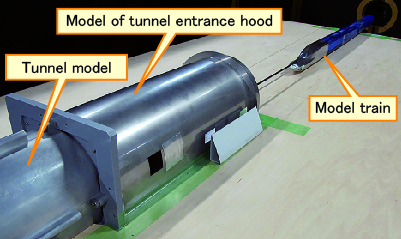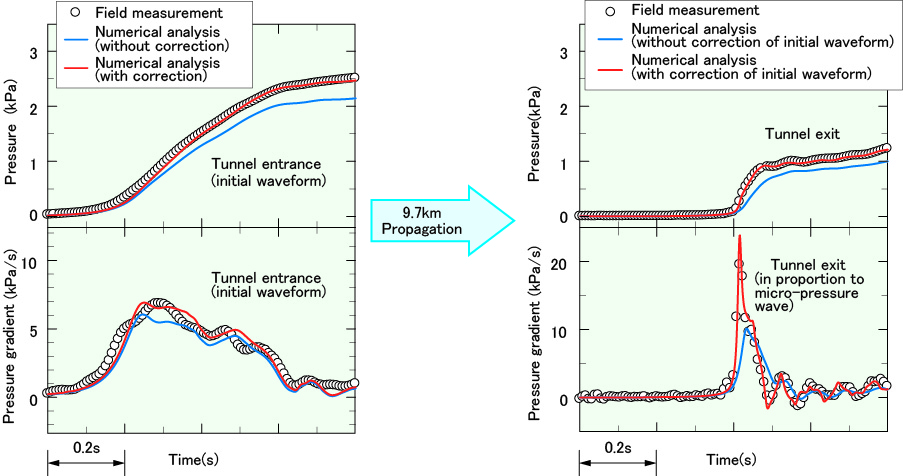4. Increasing the accuracy of micro-pressure wave estimation in tunnels with tunnel entrance hood
- By identifying the factors which lead to errors in numerical analysis of a compression wave generated when a high-speed train enters a tunnel, it is possible to increase the accuracy of tunnel micro-pressure wave estimations.
- This method makes it possible to predict more accurately the effect of a tunnel entrance hood to mitigate the micro-pressure wave.
As a measure to mitigate micro-pressure waves emitted from a tunnel portal, tunnel entrance hoods placed over the tunnel portals (entrance) are often used to reduce the pressure gradient of the compression wavefront. In order to assess the effectiveness of measures to mitigate micro-pressure waves it is necessary to have an accurate estimate of the compression waveform.
An experiment was therefore carried out with field measurements and using a model of the actual shape (Fig.1) and a comparison was made with a numerical analysis using a compression wave rapid calculation method. Results showed that there were three main sources of error in the numerical analysis, namely the pressure increase in the compression wave, the flow separation from the vehicle body leading to an apparent increase in the vehicle cross-sectional area, and the offset of the running position from the tunnel center. The input parameters for the numerical analysis model and the model itself were corrected according to these findings. The result of this, illustrated in Fig. 2 showed that the error between the numerical analysis and measured maximum pressure gradient for the compression wave was reduced from 11% to 1% at the tunnel entrance (initial waveform) and from 50% to 15% at the tunnel exit (in proportion to micro-pressure wave).
This method makes it possible to predict more accurately the efficiency of tunnel entrance hoods installed on tunnels to mitigate the effect of micro-pressure waves.

Fig.1 Experiment using actual shape models
Fig.2 Pressure and pressure gradient of compression waveform inside tunnel